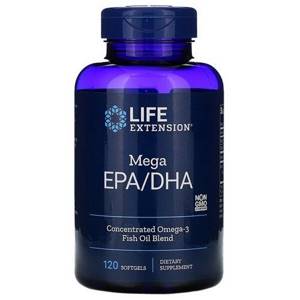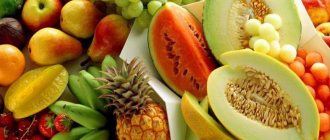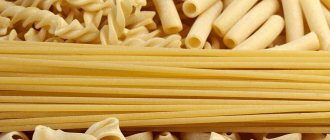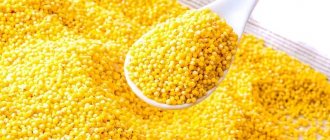In this article we will tell you:
- Functions of fats
- Classification of fatty acids
- Fat burning
- Omega-3 and Omega-6 PUFAs
- Daily fat requirement
- Healthy and unhealthy fats
- Fat deficiency
- Excess fat in the diet
Fats
― essential food components that perform a huge range of multidirectional functions in the human body. From a chemical point of view, this is a combination of the polyhydric alcohol glycerol and three fatty acids - and the type, length of carbon chains and types of bonds between carbon atoms will largely determine the energy value of the latter.
What is the daily requirement for this class of organic compounds? What to give preference: products of plant or animal origin? Let's figure it out.
Functions of fats
- Energy
- indeed, the power plants of cells, tirelessly producing energy, are capable of using not only carbohydrates as raw materials - although, to be honest, they often prefer glucose.
The use of fats as metabolic firewood is a very beneficial process and provides long-term saturation at all levels of the body’s functioning.
After triglyceride molecules have been broken down into their constituent components by digestive enzymes and absorbed into the epithelial villi of the inner lining of the intestine, fatty acids and glycerol are sent to the mitochondria, where they are “burned” with the subsequent formation of energy in the form of ATP.
Just think about it: if 1 glucose molecule is capable of producing only 38 ATP molecules (and this takes into account that all the stars in the sky will converge and oxygen will be supplied on time - otherwise, the process will be limited to 2 ATP molecules and the formation of lactic acid). At the same time, such an efficiency of fat is equivalent to several hundred ATP molecules - everything, we repeat, depends on the composition of fatty acids.
However, there are some limitations: in particular, the transformation of glucose does not require the presence of mitochondria, small energy plants - this is perhaps the only cascade of catabolic reactions (that is, breakdown processes) that occurs in the cytoplasm of cells. In addition, the existence of the so-called “barrier organs,” which include, for example, the brain, makes it impossible (due to the insurmountable border between the blood and the tissue itself) for fatty acids, transported in complex with large molecules by plasma proteins, to enter them from the vessels.
- Structural
- first of all, these are components of cell membranes. Phospholipids (along with protein molecules) participate in the formation of a clearly defined boundary between the cytoplasm (that is, the internal contents) and the extracellular environment.
- Regulatory
: Many biologically active compounds are formed from them. Signaling molecules, steroid hormones, and even individual vitamins are all lipophilic in nature.
- Shock absorbing
- This is a kind of airbag that protects internal organs from mechanical damage.
Classification of fatty acids
- Short chain
(short-chain fatty acids) - are formed in the large intestine under the influence of bacteria inhabiting it from undigested food components - in particular, carbohydrates. They, as studies note, are able to reduce the synthesis of cholesterol in hepatocytes and neutralize to some extent inflammatory reactions, thus preventing the development of fatty liver.
In addition, one of their representatives, butyrate, obtained during the fermentation of dietary fiber, stimulates the growth and reproduction of colonies of bifidobacteria and lactobacilli. It also activates thermogenesis - heat production - and energy expenditure, thus promoting weight loss and playing a significant role in the context of preventing insulin resistance and other disorders of carbohydrate metabolism.
Propionic acid, another short-chain fatty acid, is not only produced by bacteria in the intestinal lumen, but also comes from the outside in certain foods, especially yogurt and cheese. This is the raw material that is included in hepatocytes in gluconeogenesis - that is, in the synthesis of glucose directly inside the human body.
- Medium chain fatty acids
found in some foods: coconut oil, cream and milk;
- Long chain fatty acids
have more than 18 carbon atoms. In particular, this category includes the well-known omega-3 and omega-6 polyunsaturated acids, which we will discuss separately below.
Sources[edit | edit code]
- ↑ 1.01.1 Leutholtz B, Kreider R: Exercise and Sport Nutrition. In Nutritional Health. Edited by Wilson T, Temple N. Totowa, NJ: Humana Press; 2001:207-39.
- ↑ 2,02,1 Sherman WM, Jacobs KA, Leenders N: Carbohydrate metabolism during endurance exercise. In Overtraining in Sport. Edited by Kreider RB, Fry AC, O'Toole ML. Champaign: Human Kinetics Publishers; 1998:289-308.
- Kerksick C, Harvey T, Stout J, Campbell B, Wilborn C, Kreider R, Kalman D, Ziegenfuss T, Lopez H, Landis J, Ivy JL, Antonio J: International Society of Sports Nutrition position stand: nutrient timing. J Int Soc Sports Nutr 2008, 5:17.
- Rodriguez NR, Di Marco NM, Langley S: American College of Sports Medicine position stand. Nutrition and athletic performance. Med Sci Sports Exerc 2009, 41(3):709-31.
- Rodriguez NR, DiMarco NM, Langley S: Position of the American Dietetic Association, Dietitians of Canada, and the American College of Sports Medicine: Nutrition and athletic performance. J Am Diet Assoc 2009, 109(3):509-27.
- Sawka MN, Burke LM, Eichner ER, Maughan RJ, Montain SJ, Stachenfeld NS: American College of Sports Medicine position stand. Exercise and fluid replacement. Med Sci Sports Exerc 2007, 39(2):377-90.
- ↑ 7.07.1 Currell K, Jeukendrup AE: Superior endurance performance with ingestion of multiple transportable carbohydrates. Med Sci Sports Exerc 2008, 40(2):275-81.
- ↑ 8,08,1 Jeukendrup AE, Moseley L: Multiple transportable carbohydrates enhance gastric emptying and fluid delivery. Scand J Med Sci Sports 2008.
- ↑ 9,09,1 Earnest CP, Lancaster SL, Rasmussen CJ, Kerksick CM, Lucia A, Greenwood MC, Almada AL, Cowan PA, Kreider RB: Low vs. high glycemic index carbohydrate gel ingestion during simulated 64-km cycling time trial performance. J Strength Cond Res 2004, 18(3):466-72.
- ↑ 10,010,1 Venables MC, Brouns F, Jeukendrup AE: Oxidation of maltose and trehalose during prolonged moderate-intensity exercise. Med Sci Sports Exerc 2008, 40(9):1653-9.
- ↑ 11,011,1 Jentjens RL, Jeukendrup AE: Effects of pre-exercise ingestion of trehalose, galactose and glucose on subsequent metabolism and cycling performance. Eur J Appl Physiol 2003, 88(4-5):459-65.
- Achten J, Jentjens RL, Brouns F, Jeukendrup AE: Exogenous oxidation of isomaltulose is lower than that of sucrose during exercise in men. J Nutr 2007, 137(5):1143-8.
- Jentjens RL, Venables MC, Jeukendrup AE: Oxidation of exogenous glucose, sucrose, and maltose during prolonged cycling exercise. J Appl Physiol 2004, 96(4):1285-91.
- Jeukendrup AE, Jentjens R: Oxidation of carbohydrate feedings during prolonged exercise: current thoughts, guidelines and directions for future research. Sports Med 2000, 29(6):407-24.
- Rowlands DS, Wallis GA, Shaw C, Jentjens RL, Jeukendrup AE: Glucose polymer molecular weight does not affect exogenous carbohydrate oxidation. Med Sci Sports Exerc 2005, 37(9):1510-6.
Fat burning
As previously noted, fats, although not a 100% universal source of fuel for cells, are nevertheless a very beneficial substrate for energy production. Conventionally, three stages can be distinguished:
- Oxidation of fatty acids in mitochondrial furnaces
— the presence of the latter is a mandatory element in the context of lipid metabolism.
This process is preceded by the breakdown of triglycerides (synthesized in hepatocyte factories or coming from outside, with food) into polyhydric alcohol glycerol and three fatty acids. The reaction is catalyzed by lipase, a hormone-sensitive enzyme secreted primarily by pancreatic cells.
Its activity is stimulated
:
- Thyroid hormones
- T4 (thyroxine) and T3 (triiodothyronine).
- Glucagon
- secreted by the islets of Langerhans, localized in the pancreas. Its task is to raise blood glucose levels and thus prevent the development of hypoglycemia.
- Adrenaline
— is formed by the adrenal medulla under the influence of stress factors, when the human body is in dire need of energy (primarily to carry out the “fight or flight” reaction).
On the other hand, lipase activity is inhibited by:
- Insulin
(This explains the violation of fat utilization in diabetes mellitus, which is accompanied by the infiltration of fatty acids into various organs with the subsequent development of their obesity).
- Chemical compounds similar to it - for example, lectins
as part of wheat.
- acetyl-CoA formed as a result of the oxidation of fatty acids is sent along the path of further energy production.
, which again occurs in mitochondria: on the respiratory chain built into their inner membrane.
We recommend
“Metabolic syndrome: causes, symptoms, treatment and prevention” Read more
In addition to hormone-controlled lipase, fatty acid oxidation requires
:
- Vitamin B5
- pantothenic acid, concentrated in:
- chicken fillet;
- offal;
- some legumes;
- cauliflower;
- eggs;
- nuts
- Sufficient supply of magnesium to the body
.
- Active forms of vitamins B2 and B3
.
- Carnitine
- carries out the transfer of fatty acids from the cytoplasm to the place of their oxidation, into mitochondria.
- Alpha lipoic acid
.
Omega-3 and Omega-6 PUFAs
Omega-3 and omega-6 polyunsaturated fatty acids are essential food components necessary for the normal functioning of the body during all age periods. “Polyunsaturated” is a term that characterizes the chemical structure and means the presence of double bonds or bonds in the composition of their carbon chains.
“vitamin F” was used to designate essential fatty acids - that is, those that the body is not able to form on its own.
- this once again emphasizes the importance of the functions mediated by them.
This category, in particular, included linoleic and linolenic acids
- omega-6 and omega-3 fatty acids, respectively. From the first, arachidonic acid is synthesized in the cells of our body - a precursor of tissue hormones, which largely determine the course and nature of inflammation. The second is the raw material for the production of eicosapentaenoic and docosahexaenoic acids (EPA and DHA).
It must be said that our cells have learned to produce both EPA and DHA on their own, but this process is not only labor-intensive and time-consuming, but also largely depends on the functional characteristics of the corresponding regulatory genes.
Docosahexaenoic acid is especially important for children: this is evidenced by the fact that it largely predominates in the gray matter of the brain, and also affects visual acuity, being part of the lining of the retina.
Supplementation with key omega-3 PUFAs has been associated with improvements in children's visual memory, concentration, and has even been used as part of the treatment for attention deficit hyperactivity disorder. In addition, scientists increasingly believe that there is an undeniable relationship between the concentration of these long-chain fatty acids in the blood plasma and red blood cell membranes with the intellectual abilities of the child.

Considering that polyunsaturated fatty acids are a component of all cell membranes (and cells of the immune system are no exception), their relationship with the implementation of the body’s protective functions is also clear.
The results of recent studies are also interesting: it turns out that an increase in the content of omega-3 among the components of the bilipid layer of the selective boundary at the junction of the cellular and extracellular environments is one of the key factors influencing the conduction of chemical signals (synapses) from receptors to the nucleus in lymphocytes - cells that in the process of their differentiation, they provide not only the production of antibodies and immune memory mechanisms, but are also an important element of the cellular component of immunity.
In addition, in the nucleus they directly influence the expression of genes, the products of which suppress the formation of pro-inflammatory signaling molecules (for example, interleukin-1).
EPA and DHA inhibit the enzyme that provides the formation of pro-inflammatory molecules: prostaglandins, leukotrienes, thromboxane, which are involved in increasing vascular permeability with the subsequent development of edema, as well as irritating nerve endings and thereby participating in the formation of sensations of pain and itching.
Increased attention to this class of compounds is explained by the fact that any shift in the functioning of the immune system, leading to an imbalance among its police cells, mediates the development of not only various types of autoimmune and allergic diseases, but also largely affects oncogenesis, as well as the progression of atherosclerosis.
Researchers rightly believe that the evolutionary process was partly mediated by the diet of our ancestors: so, in their opinion, hundreds of years ago the ratio between omega-6 and omega-3 PUFAs was equal and amounted to 1:1. Today, this ratio has shifted towards 20:1 - impressive, isn’t it?
Such concern, it must be said, is very justified, given all the previously listed effects of omega-3 fatty acids. You can also add regulation of the lipid spectrum (increasing “good” cholesterol in HDL and reducing “bad” cholesterol in LDL and VLDL), inhibition of platelet aggregation and hypotensive effects.
Study
: Omega-3 in children's practice, Long-chain polyunsaturated fatty acids of classes ω-3 and ω-6 as an essential nutrient in different periods of childhood
Daily carbohydrate intake
Despite the fact that a no-carb diet and strict restriction of carbohydrates in the diet is one of the most effective ways to quickly lose weight and lose weight, such diets cannot be considered a “normal” daily diet. For optimal health, it is necessary not only to reduce the daily intake of carbohydrates as much as possible, but to divide them into “bad” and “good”.
The secret is that carbohydrates with a high glycemic index (sugar, white flour and other “empty calories”) lead to excess fat gain, unlike carbohydrates with a low GI (various vegetables and whole grain cereals). In addition, foods with a low glycemic index usually contain fiber, which helps not only optimize digestion, but also help you lose weight faster.
Norms of carbohydrate intake per day

Daily fat requirement
In general, determining the amount that would account for the daily share of fat in the diet largely depends not only on the type of diet followed, but also on gender, age, and individual characteristics. In the context of the latter, it is impossible not to mention the total decrease in the production of lipase by the pancreas (the enzyme that actually ensures the processes of chemical breakdown of this class of compounds), as well as problems with bile outflow that are often encountered in the practice of every nutritionist. All this creates certain difficulties in the mechanisms of lipid absorption, even if they are optimally supplied with food.
Speaking about the average need, you can use, for example, this formula:
Amount of fat in the diet = 1.5 * weight in kg
(In this formula, it is necessary to multiply the coefficient by the optimal body weight, that is, without taking into account excess weight, if present)
BZHU norms - the basics of a healthy diet
It is simply impossible to establish universal daily nutritional standards in grams - ultimately, everything depends on both the glycemic index of the food eaten and the person’s metabolism, his athletic training and level of physical activity. Among other things, food calorie tables also imply an error of 10-30% of the indicated figures - which calls into question the entire theory of calorie counting.
Subscribe to our INSTAGRAM account!
That is why we tried not to just name the daily protein intake, but explained where these numbers come from and how BZHU norms are calculated. We've summarized the latest scientific information into detailed tables of daily protein, fat and carbohydrate intakes for men and women based on their level of physical activity and weight.
Healthy and unhealthy fats
“Healthy” and “harmful” fats is a definition equivalent in its incorrectness to the division of hormones into “male” and “female”. Perhaps the only exception is trans fats - their use is contraindicated not only for patients on treatment protocols, but also for people in general who care about the quality and health of their body.
Fats can be divided into saturated and unsaturated
- it all depends on the nature of the chemical bond (single or double/triple) between the carbon atoms in the fatty acids they contain. The former, as a rule, are concentrated in products of animal origin, the latter - in plant origin.
Animals are traditionally considered less healthy, but this does not mean the need to completely eliminate them from the diet: the saturated fatty acids they contain are components of cell membranes. This is why meat, eggs and milk are definitely not foods to be afraid of.

You should also make sure that you have sufficient consumption of fatty fish: tuna, mackerel, herring - American protocols recommend including them in your diet at least 2 times a week. Omega-3 polyunsaturated fatty acids, which these foods are rich in, are essential for newborns: they account for up to 35% of the dry weight of the brain.
It is not surprising that their active reserves are formed in the fetal body by the third trimester, and then, after birth, they serve as a necessary factor for the normal differentiation and maturation of brain neurons.
In general, given the huge preponderance in favor of pro-inflammatory omega-6 fatty acids, which is inevitable in the realities of modern lifestyle and nutrition, still try to control and minimize this imbalance. Below are examples of products in which the main representatives of polyunsaturated fatty acids are concentrated.
Omega-6 PUFA content
- Linoleic acid
concentrated in
:- Sunflower oil.
- Pistachios.
- Sesame seeds.
- Pumpkin seeds.
- Corn and soybean oils.
- Arachidonic acid is found in
:
- Butter.
- Offal.
- Pork fat.
- Eggs.
Omega-3 PUFA content
- Alpha-linolenic acid
rich
:- Linseed oil.
- Pumpkin seeds.
- Walnuts.
- Soybean oil.
- Rapeseed oil.
- Purslane.
- Eicosapentaenoic acid
(EPA)
and docosahexaenoic
(DHA
) acids can be found in
:- Salmon.
- Mackerel.
- Cod liver.
- Tuna.
- Seafood.
- Trout.
What is lecithin?
Lecithin contains glycerin, unsaturated fatty acids, phosphorus and vitamin B4 - choline . Lecithin is not an essential nutrient, but plays a very important role in the body: it promotes digestion, absorption and proper metabolism of fats, enhances bile secretion, in combination with protein forms cell membranes, and normalizes cholesterol metabolism. It also reduces the accumulation of fats in the liver, transporting them into the blood. The body's daily need for lecithin is about 5 g. Eggs, liver, fish roe, rabbit meat, fatty herring, and unrefined vegetable oils are rich in this substance.
An excellent source of lecithin is buttermilk, a low-fat cream obtained as a byproduct of churning butter. Today, stores sell buttermilk made with special cultures of bacteria added to low-fat milk that convert the milk's natural sugars into acid, resulting in a thicker, tangier-tasting milk. This drink contains only 0.5% fat and is very rich in vitamins and minerals.
Fat deficiency
Low-fat diets, which, unfortunately, have not yet lost their popularity, are a direct road to disorders, primarily of the menstrual cycle. We have already mentioned that the substrate for the formation of sex hormones is cholesterol. In addition, it is also a raw material for the synthesis of adrenal hormones and vitamin D.
Considering the popularity of sunscreens and the climate conditions in which we live, calciferol deficiency is already widespread: as the American doctor M. Gregor said in his book, people have long stopped running naked in equatorial Africa. However, all the adverse consequences that arise from a lack of vitamin D in the body follow from this. The latter regulates the division and maturation of cells - including representatives of the immune system.

It is believed that it is also involved in the elimination of cancer cells - that is, pathologically altered ones - this is achieved not only by activating their programmed death (apoptosis), but also by participating in the transcription of genes responsible for the processes of growth and reproduction.
Possessing a fat-soluble nature, it easily penetrates the bilipid layer of the cell membrane and interacts with receptors localized in the nucleus, turning on and off more than a thousand genes of the human body. So, let's say, it mediates the formation of specific proteins that bind insulin-like growth factors (IGFs), and thus prolong their actions. It is known that insufficient IGF activity is associated with an imbalance between adipose and muscle tissue with a shift towards the predominance of the former.
Vitamin D also affects the efficiency of insulin - in particular, it increases the number of receptors for it on the membranes of cells in various organs, which greatly facilitates the passage of glucose from the systemic bloodstream into the tissues. So, we can firmly state that calciferol to some extent prevents the development of carbohydrate metabolism disorders - primarily insulin resistance.
We recommend
“Proper nutrition for health and a slim figure: menu for the week” Read more
In addition, the wide range of effects exerted by this hormone-like substance is also realized through its influence on the signaling pathways of cells of various tissues, especially the immune and nervous ones.
It, as previously mentioned, is formed under the influence of ultraviolet radiation in the skin from cholesterol (it should be borne in mind that this ability decreases with age), undergoing further biotransformations in the liver and kidneys, catalyzed by specific enzymes, or comes with food components. The following products are rich in it:
- fish fat;
- mackerel;
- herring;
- salmon;
- tuna;
- eggs;
- flounder;
- butter;
- cheeses.
To be fair, it should be said that calciferol deficiency can be caused not only by reduced fat consumption, but also by impaired digestion and absorption in the gastrointestinal tract, which is usually observed with:
- exocrine pancreatic insufficiency - lipase formation is known to be the first to be affected;
- decreased synthetic activity of the liver;
- impaired bile secretion due to dyskinesia, helminthic infestation or mechanical obstruction of the excretory tract.
In general, given the huge variety of functions performed by vitamin D, insufficient fat intake affects the functioning of all body tissues, and not just bone tissue, as was previously believed.

In addition, vitamin D works in tandem with K2
- menaquinone, which is formed by resident bacteria of the large intestine (in particular, E. coli) and comes with fat-rich foods:
- cheeses;
- offal;
- eggs;
- butter.
K2 is involved in mediating various biochemical reactions and normal bone calcification. In other words, a decrease in its supply is an obvious trigger, sooner or later leading to the development of osteoporosis.
Study
: The effectiveness of using a combined vitamin complex: vitamin D and vitamin K
In the context of this micro-topic, it is impossible not to mention the endocrine function of adipose tissue, which secretes, along with pro-inflammatory molecules, some hormones - in particular, leptin
, which, by acting on the corresponding receptors in the hypothalamus, one of the key structures of the brain, takes part in the realization of a feeling of satiety.
In addition, it produces adiponectin
, a decrease in the content of which is one of the triggers for the development of diabetes mellitus. The action of this hormone is aimed not only at improving the sensitivity of cellular receptors to insulin (which naturally decreases with the constant predominance of high-carbohydrate foods in the diet), but also at increasing HDL, which has a pronounced anti-atherogenic effect.
In addition, adiponectin prevents the narrowing of the lumen of blood vessels by inhibiting the adhesion (sticking) of cells to their internal lining (endothelium), as well as stimulating the formation of a relaxation factor, a vasodilator such as nitric oxide.
Study
: Metabolic effects of adiponectin
Excess fat in the diet
Just a few decades ago, fats were blamed for all human sins: for example, they were credited with a leading role in the development of various types of heart pathologies. The never-ending debate has not yet completely subsided, and it should be noted that the factor of their participation in the development of atherosclerosis still remains under the strict attention of scientists.
But still, after numerous studies, a fairly well-founded conclusion supported by scientific work can be made: the atherogenic effect should rather be attributed to the excess intake of carbohydrates into the body (especially in the realities of modern nutrition).
We recommend
“Nutrition for blood vessels: products to strengthen them” Read more
Recalling at least the fatty liver, where the decisive role is given to fructose, it is quite logical to assume that in the context of lipid metabolism, disorders appear when their utilization fails: that is, when the number of enzymes involved and the minerals necessary for the latter’s work decreases, as well as when mitochondria decrease, which invariably accompanies chronic stress.
It would be more correct to associate an excess of fat with gaining extra pounds and the inability to lose weight.
To summarize, it is still impossible to completely exclude the influence of excessive consumption of fatty foods on the progression of atherosclerosis - the only question is which class of compounds plays a dominant role in increasing the level of cholesterol in LDL. In any case, the truth is always somewhere in the middle - at least until a sufficient scientific research base has been accumulated.
Tips for losing weight

When losing weight, you need to intelligently approach the distribution of nutrients. For those who want to lose extra pounds, there are several tips from nutritionists:
- Instead of exhausting and heavy diets, it is better to calculate the BJU.
- The daily intake of carbohydrates should not be lower than 140 grams.
- Consumption of fats is necessary for proper functioning of the immune system.
- The daily requirement for fat is 30 – 40 grams.
- Don’t forget about the water you need to drink per kilogram. For 1 kg of weight 20 milliliters of water.
- If you are overweight, you should give up sweets in favor of fruits.
If you work on yourself correctly, your weight will easily return to normal.








